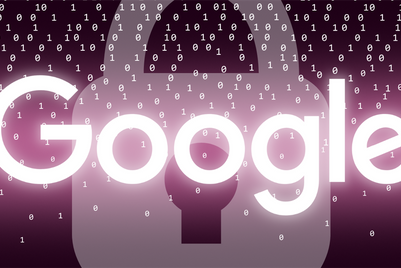
At the IAA Tech Pulse summit, Prasad Shejale, founder and CEO, Logicserve Digital; Sanjay Sindhwani, CEO, Indian Express Digital; Siddharth Dhabade, managing director, MiQ; and Neil George, managing director, Nivea India, had tips on how marketers need to approach the cookie-less world and ensure the focus of last-mile connectivity doesn’t get hampered.
The panel was moderated by Nandini Dias, former CEO, Lodestar UM.
Cookie-less world: A sweet solution or bitter bite?
George set the context of how Nivea uses multiple touchpoints and how they aim to deliver a holistic approach instead of focusing on long-tail marketing experiences.
He expressed, “Different companies will have different impacts in a cookie-less realm. For Nivea, we are always looking at the customer journeys for our sub-categories. We operate at multi-channel levels. Roughly 25% of our turnover comes from online sales. Therefore, we marry the online and offline marketing channels to ensure we have omnichannel offerings for consumers.”
George added that the lack of cookies will not impact his business drastically. He shared, “Cookies are not the end-all for us. Every month we make it a point to meet over 20 lakh consumers. So we reach out to the last mile consumer and gauge their views on the brand. We aim to create a long-tail marketing approach by creating demand and engagement for our brands.”
From crumbling online cookies to baking new strategies
Talking about what needs to be reimagined in a cookie-less ecosystem, Shejale said, “In a cookie-less world, multiple stakeholders such as brands, tech players, government regulators and consumers will get affected. What will change is the ability to track consumer data. Furthermore, optimisation, measuring impact and personalisation are the buckets that will get affected. To ensure effectiveness, brands will have to create digital touchpoints and create their first-party data. This will give brands an identity graph of their consumers.”
Voicing what will change for him from a publisher's perspective Sindhwani said, “Publishers rely on cookie-based re-targeting platforms. But no one knows what will happen in this cookie-less scenario. We started building first-party data, trying to know the customers' needs and creating hooks to keep the consumer engaged. Another element we brought to the fore is trying to increase the component of our direct advertising. Through the first-party data, we can share that data with our advertiser and offer solutions that are in our control.”
Sindhwani pointed out that in a publishing house, 20-50% of revenue comes from third-party cookies.
“On the revenue front for publishers, there will be a risk but also an opportunity. It depends on how ready the publisher is to offer solutions to intermediaries and advertisers. In the last two years, we have also accelerated our subscription offerings. When a publisher has subscriptions they have a reason to create identity pools for the user and provide personalised solutions. This same model can be used for advertisers with an opportunity to target high-frequency users on the platform. Even newsletters can target consumers through their email address or WhatsApp number”, he expressed.
Capturing data through other mediums
Dhabade remarked, “When looking at the marketing infrastructure, creating big tech solutions is key. In addition, machine learning can track contextual signals by analysing what the consumer is browsing will be need to looked into. This will enable us to form silos according to that data and will help to target consumer cohorts effectively.”
Dhabade pointed out that a lot of consumer tracking, even now happens on non-cookie channels.
“A lot of targeting happens on device IDs, connected TVs and DOOH (digital out-of-home). These non-cookie channels are also scaling in reach and growth. Connected TVs can be used to do a household sync by connecting with consumers' mobile devices and target brand messaging through these channels," Dhabade voiced.
Advertiser sentiment on digital spends in a cookie-less world
George said, “In the personal and skin care space, we have moved past the 50-60% in terms of digital spends. We have trained everyone in our organisation to adhere to targeted messaging. Our marketers and agencies, while communicating with consumers have to follow the new age targeting techniques. Our challenge is to navigate how to move from the big tech sellers such as Amazon and Flipkart as they have all the first-party data of our products.”
Rounding up the conversation, George shared that the only way to get through a cookie-less world is to create a first-party database.
“Brands don't need to compete with big tech companies for data. Everybody has a different scale to play with and our scale is different. Hence I'm not afraid if they’ll get an upper hand on first-party data", said George.
Shejale added that generative AI and blockchain can be a saving grace in a cookie-less world. However, he feels that marketers should not throw in the towel just yet.
“The world is changing so fast. Everything is becoming consolidated, hence brands will have to take matters into their own hands and navigate data with the tools they have available to them. However, disruption is a trend that isn’t going out of style and hence it is too early to say if this will pose as a challenge for stakeholders," expressed Shejale.


.jpg&h=334&w=500&q=100&v=20250320&c=1)

.jpg&h=334&w=500&q=100&v=20250320&c=1)
.jpg&h=334&w=500&q=100&v=20250320&c=1)

.jpg&h=334&w=500&q=100&v=20250320&c=1)
.jpg&h=334&w=500&q=100&v=20250320&c=1)








.jpg&h=268&w=401&q=100&v=20250320&c=1)

.jpg&h=268&w=401&q=100&v=20250320&c=1)
